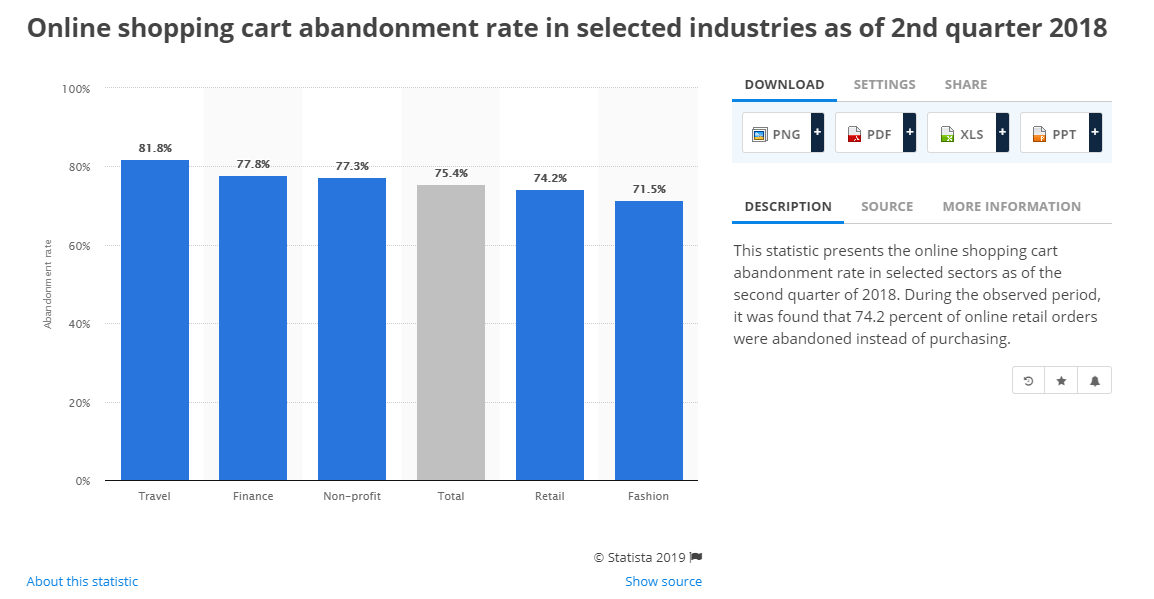

Millions of people shop online every year looking for the best deals for the holiday season.
According to Statista, in the U.S., Christmas shopping season traditionally begins on Black Friday. In 2018, people spent more than $123 billion on retail ecommerce.
With all this time and money being spent online, how can you make sure you have the right holiday SEO and marketing strategy to get more traffic, rankings, and sales?
Let’s explore the following:
- Planning
- Promotion strategy
- Technical strategy
- Your checkout process
- Internal and external linking
- Measurement plan
1. Planning
One of the most important things to consider before the holiday season is to plan for it. Unfortunately, SEO is not as quick as paid search. It takes time to see results.
If you know that 30% to 50% of your business is done in the holiday season, planning is critical to your success for the next holiday season.
One of the most important things to do is conducting a content audit and analysis to see where the opportunities are for you to create content or update existing content at least 6 to 8 months before the holidays.
I can’t tell you how many times a company has come to me with a request to rank for Christmas gifts, but they don’t have any Christmas related content.
No dedicated landing page that has Christmas gifts, no content that is relevant for different topics around Christmas gifts, no questions that cater toward different Christmas gift intent.
If you don’t have those basic elements, you aren’t going to rank for Christmas gift related keywords.
Always build out a content calendar with different concepts and different content types that cater to multiple intents.
For example, it would make sense to have content that has some imagery because most people would like to see different types of Christmas gift cards based on the intent of the query.
It would also make sense to have an answer box strategy for related queries because end users are asking questions. Therefore, your content strategy should be holistic to capture them at the early stage.

When trying to pick which products or pages to focus on, analyze your previous performance for the past season.
Review your analytics to see:
- What products performed well last year.
- How people found those landing pages.
- What queries drove traffic to those landing pages.
- How your landing pages converted.
It’s always a smart idea to work closely with your paid search team and optimize for keywords and content that performed well from a paid search perspective and rank in striking distance on the organic side.
Having both paid and organic ads will dominate the search engine result pages and put your brand in front of more customers, which can improve sales and drive more traffic.
Don’t forget about social. Social listening can provide you with a lot of content ideas that you may not have even thought about.
You may find some new buzz words, new content ideas, or new opportunities that competitors are using that could benefit your brand.
Pinterest is a must for promoting holiday content. You can create holiday Pinterest boards which will showcase your top holiday products and link to your holiday pages.
Reusing Old Content
Do you have a Christmas guide from last year? You can update it for this year with new products.
If you keep a database of people who have purchased from you last year or have signed up for your email list, use this to get your products in front of them even before holiday time.
2. Promotion
Writing content simply isn’t enough.
After creating your content plan, always make sure to collaborate with your paid and social team. This additional support will help your content get seen by the masses.
Always support your content with paid social from Facebook, Twitter, and other social channels.
Add links in your email to help spread the word about your content and put the content all over your social media channels and in newsletter and events, etc.
3. Technical
There are several technical mistakes that I have seen brands make trying to optimize for the holiday season.
One common issue: some businesses are not ready for the spike in holiday traffic.
Always make sure you have a lightning fast server that can handle big increases in traffic.
Believe it or not, some popular sites have crashed during Black Friday and other holidays because of the influx of new traffic to their site and unfortunately, they don’t have the proper infrastructure to support it.
Load Time
When creating or updating landing pages, it’s critical to make sure that they are mobile friendly and load in under 2 seconds at most (preferably 1 second).
Mobile customers are looking to purchase at the moment. Having a poor load time can provide a poor user experience, which could impact your holiday season sales.
See Anyone’s Analytics Account, in Real Time.
You can literally see real-time sales and conversion data for any website, and which campaigns drove that traffic. Start your free trial today.
Page Deletion & Redirects
Another common mistake I see some brands make is deleting pages without redirecting category and product level pages.
This is a big mistake.
If you delete product and category pages, especially pages that have rankings, authoritative links, fresh and high-quality content, etc., you’re going to have to create a brand-new page if you do not redirect them.
Keep your landing page URLs the same. Never change URLs unless you absolutely have to. If you do, always set up a 301 redirect to the new page.
Running Out of Products
If your brand runs out of products during the holiday season, always have a sound redirect strategy in place to provide them with related products.
This can help users stay on your site, find related products, and help you earn incremental revenue.
Site Monitoring
Consistently monitor your site for any crawl errors, dead pages, etc. which could impact your site performance.
Structured Data
Structured data is imperative to give additional information to the search engines in the way they could understand.
Make sure all your product pages and important pages on your site are marked up with product schema, and most important of all, review schema.
The more positive reviews you get, the more popular your products become. The more popular your product are, the better rankings your product will receive.
4. Your Checkout Process

Shopping cart abandonment rates are a little over 70% during the holiday season, according to Statista.
The best way to provide a good shopping cart experience?
Make it as easy as possible and to optimize your check out process.
For example, consider the following:
- Reduce the number of checkout pages.
- Reduce the number of forms and information that needs to be filled out.
- Provide a guest checkout option.
- A/B test.
5. Internal Linking & External Linking
Internal linking is an underutilized tactic that could help reinforce important landing pages.
If you have pages that are related to each other (i.e., blog content that showcases tips for choosing the best Christmas card), then that should have an internal link to the main category page.
Look through your site and find opportunities to take advantage of internal link opportunities.
Build links to your site from external domains and have reviews from bloggers that review your products.
This could help get high-quality links to your site that can improve your search engine visibility, traffic, and performance.
6. Measurement Plan
You need to know what worked and had an impact.
So set up a measurement plan to compare year over year performance on how your site performed during the holiday season.
Be sure to track all your keywords. Keep track of every activity that helped support your content and earn new links.
Final Thoughts
Planning in advance is key to getting a head start on holiday season SEO and digital marketing.
You need to provide the right content at the right moment to end users across all devices and platforms.
Always make sure that the content you give your target audience is relevant and gives your customers what they really want.
Content should:
- Be visual and not just static text.
- Link to the products or service that you want them to see.
As always, use strong call to action statements.
Be sure to integrate with other media to promote your message so it can grow in popularity and increase your visibility, traffic, and sales during the holiday season.
Most important of all, measure your success by comparing performance year over year – and sticking with what works for you.
[“source=searchenginejournal”]

